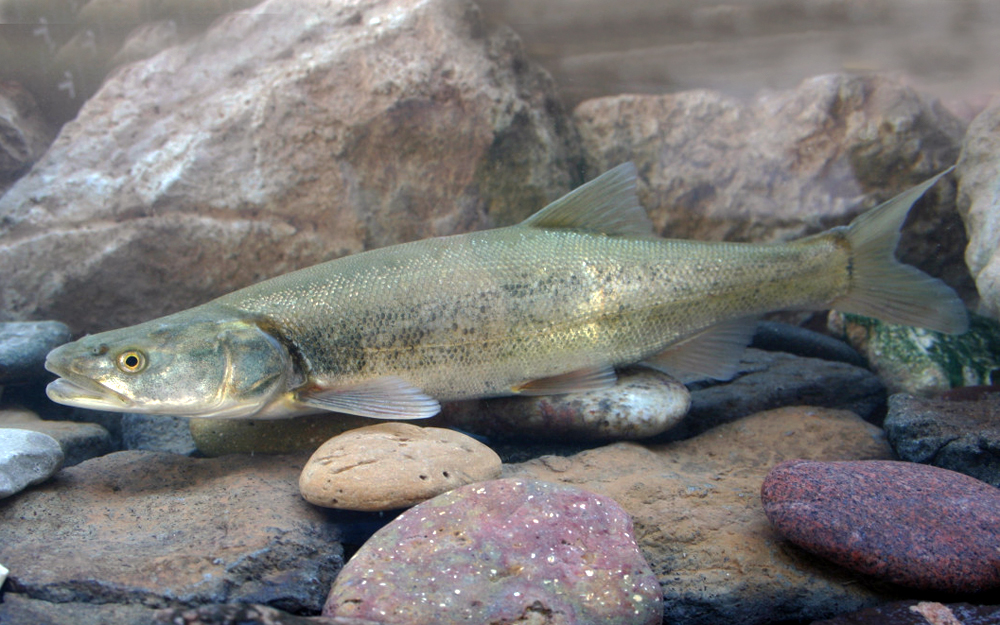Colorado pikeminnow
(Ptychocheilus lucius)

Classification
General data
The Colorado pikeminnow (Ptychocheilus lucius, formerly squawfish) is the largest cyprinid fish of North America and one of the largest in the world, with reports of individuals up to 6 ft (1.8 m) long and weighing over 100 pounds (45 kg).
Native to the Colorado River Basin of the southwestern United States and adjacent Mexico, it was formerly an important food fish for both Native Americans and European settlers. Once abundant and widespread in the basin, its numbers have declined to the point where it has been extirpated from the Mexican part of its range and was listed as endangered in the US part in 1967, a fate shared by the three other large Colorado Basin endemic fish species: bonytail chub, humpback chub, and razorback sucker. The Colorado pikeminnow is currently listed as vulnerable by the IUCN.
Description
Like the other three species of pikeminnows, it has an elongated body reminiscent of the pike. The cone-shaped and somewhat flattened head is elongated, forming nearly a quarter of the body length. Color grades from bright olive green on the back to a paler yellowish shade on the flanks, to white underneath. Young fish also have a dark spot on the caudal fin. Both the dorsal and anal fins typically have 9 rays. The pharyngeal teeth are long and hooked.
The reports of 6-ft individuals are estimates from skeletal remains, but a number of community elders, interviewed by the Salt Lake Tribune in 1994, reported that such individuals were once common. Catches in the 1960s ranged up to 60 cm for 11-year-old fish, but by the early 1990s, maximum sizes reached no more than 34 cm. Biologists now consider the typical size of an adult pikeminnow to be between 4 and 9 pounds, and reports of the fish lately exceeding 3 feet in length are now in question.











